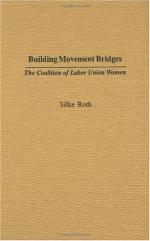|
This section contains 1,152 words (approx. 4 pages at 300 words per page) |

|
The labor movement, begun in earnest in the 1930s to gain rights and benefits for workers, was often considered radical. Wars and ideologies of different periods shaped the labor movement. Before World War II, some unions were influenced by socialism and communism's appeals to social justice. In the Cold War era (1946–1991) that followed World War II, labor shifted its image from radical to patriotic organizations that opposed communism at home and abroad.
The modern U.S. industrial relations system began in 1935 with the passage of the National Labor Relations Act (Wagner Act), providing U.S. workers with the legal rights to organize unions and to negotiate contracts with employers. It was institutionalized during World War II and became legitimized in the immediate postwar years with the passage of the Taft-Hartley Act (1947), which balanced both management and labor rights. After the end of World War...
|
This section contains 1,152 words (approx. 4 pages at 300 words per page) |

|


